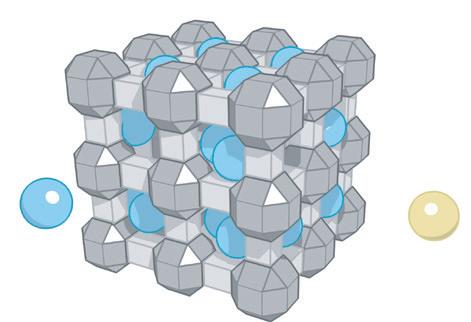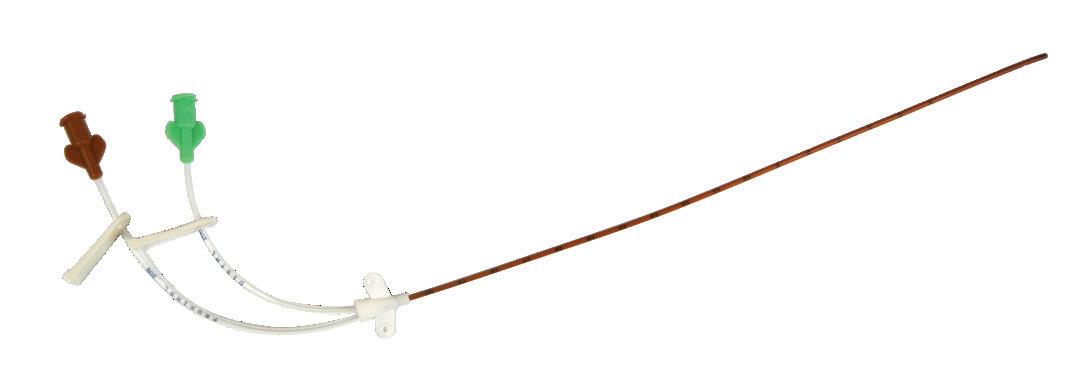NEONATOLOGY

VASCULAR ACCESS
expert umbilical catheter
The only antimicrobial umbilical catheter


The only antimicrobial umbilical catheter
Infections
52,6 Others
% %
More than one million neonatal deaths every year in the world are attributable to infection In Neonatal Intensive Care Units (NICUs) the reported [infection] incidence is 7-24.5%, and up to 40% in newborns with birth weight less than 1000 g or gestational age at birth <28 weeks(1). Bloodstream infections(2)
73 Catheter-Related Bloodstream Infections(3)
The incidence per 1000 device-days is 10.5 for umbilical catheter-associated BSI(4)
Risk factors for BSI
Consequences(3, 6, 7, 8, 9, 10)
Refusal to feed
Lethargy and hypotonia
Hyperglycemia
Metabolic acidosis
Increasing apnoea
Death
Tachycardia / Bradycardia
Increased respiratory support
The mean additional length of hospital stay in neonates with Healthcare Associated Infection (HAI) is 24 days(9)
The mean extra charges for patients with a HAI is 16 880 USD(10)
Recommendations(11)
Impact of silver zeolite-impregnated umbilical catheters in preterm infants [...] antimicrobialimpregnated umbilical catheters appear to be safe and effective in NICU patients.
Society for Healthcare Epidemiology of America - 2022
The expert umbilical catheter is the only umbilical catheter with an integrated antimicrobial technology, the AgIONTM technology, to fight against CRBSI in NICUs.
The AgIONTM technology is made of ionic silver bound into zeolite, a bio-inert ceramic integrated in the catheter material(12). When the catheter comes in contact with blood the zeolite naturally releases the Ag+ ions and replace them by Na+ ions present in the blood. It is a pure ionic exchange.
Ionic silver is a highly efficient antimicrobial technology with(12):
• a broad spectrum of action on gram+, gram- and fungi
• a low toxicity for human cells
• a tri-modal action
Tri-modal efficacy
The AgIONTM technology
Zeolite

Ag+, ionic silver is released
Na+ sodium naturally present in the blood enters zeolite
Ionic silver is a bacteriostatic that inhibits the cell reproduction in three steps.
To determine the efficacy of the AgIONTM antimicrobial system in reducing catheter-related bloodstream infections in preterm infants. A three year, single-site,
randomised study at the Careggi University Hospital of Florence. 86 preterm infants: 45 with umbilical expert and 41 with a standard umbilical catheter.
Preterms with expert umbilical catheter had shorter hospital stay and lower case fatality rate.
1. Stronati et al. Neonatal sepsis: new preventive strategies. Minerva Pediatr. 2013 Feb;65(1):103-10.
2. Sohn AH et al. Prevalence of nosocomial infections in neonatal intensive care unit patients: results from the first national pointprevalence survey - The Journal of pediatrics. 2001/12; 139(6) : 821-827.
3. C. Geffers et al. Incidence of healthcare-associated infections in high-risk neonates: results from the German surveillance system for very-low- birthweight infants. Journal Hosp Infect. 2008 Mar;68(3):214-21.
4. Neonatal rates and risk factors of device-associated bloodstream infection in a tertiary care center in Saudi Arabia.Balkhy HH1, Alsaif S, El-Saed A, Khawajah M, Dichinee R, Memish ZA.
5. Infect Control Hosp Epidemiol. 2011 Jan;32(1):42-9. Epub 2010 Dec 1. Individualized catheter surveillance among neonates: a prospective, 8-year, single-center experience. Zingg W, PosfayBarbe KM, Pfister RE, Touveneau S, Pittet D. University of Geneva Hospitals and Faculty of Medicine, Geneva, Switzerland

6. Kanti Mallicki. A Prospective Study of Nosocomial Infection in a Neonatal ICU (NICU). Pediatrics. 2015 Feb;135 Suppl 1:S8-9. doi: 10.1542/ peds.2014-3330N.
7. W McGuire et al. Infection in the preterm infant. BMJ. 2004 Nov 27; 329(7477): 1277–1280.
8. Stoll BJ et al. Late-onset sepsis in very low birth weight neonates: the experience of the NICHD Neonatal Research Network. Pediatrics. 2002 Aug;110(2 Pt 1):285-91
9. Additional hospital stay and charges due to hospital-acquired infections in a neonatal intensive care unit. J Hosp Infect. 2001 Mar;47(3):223-9. Mahieu LM1, Buitenweg N, Beutels P, De Dooy JJ
10. Donovan EF, et al.; Ohio Perinatal Quality Collaborative. The investment case for preventing NICU-associated infections. Am J Perinatol. 2013 Mar;30(3):179-84. doi: 10.1055/s-0032-1322516. Epub 2012 Jul 26.
11. Buetti N, et al. (2022). Strategies to prevent central lineassociated bloodstream infections in acute-care hospitals: 2022 Update. Infection Control & Hospital Epidemiology, 43: 553569
12. The use of silver for the control of medical devices Infection –Specific analysis of Vygon AgION catheters

13. Bertini G. et al. Reduction of catheter-related bloodstream infections in preterm infants by the use of catheters with the AgION anti¬microbial system. Early Hum Dev. 2013 Jan;89(1):21-5
FOR FURTHER INFORMATION, PLEASE CONTACT: questions@vygon.com
The specification shown in this leaflet are for information only and are not, under any circumstances, of a contractual nature.